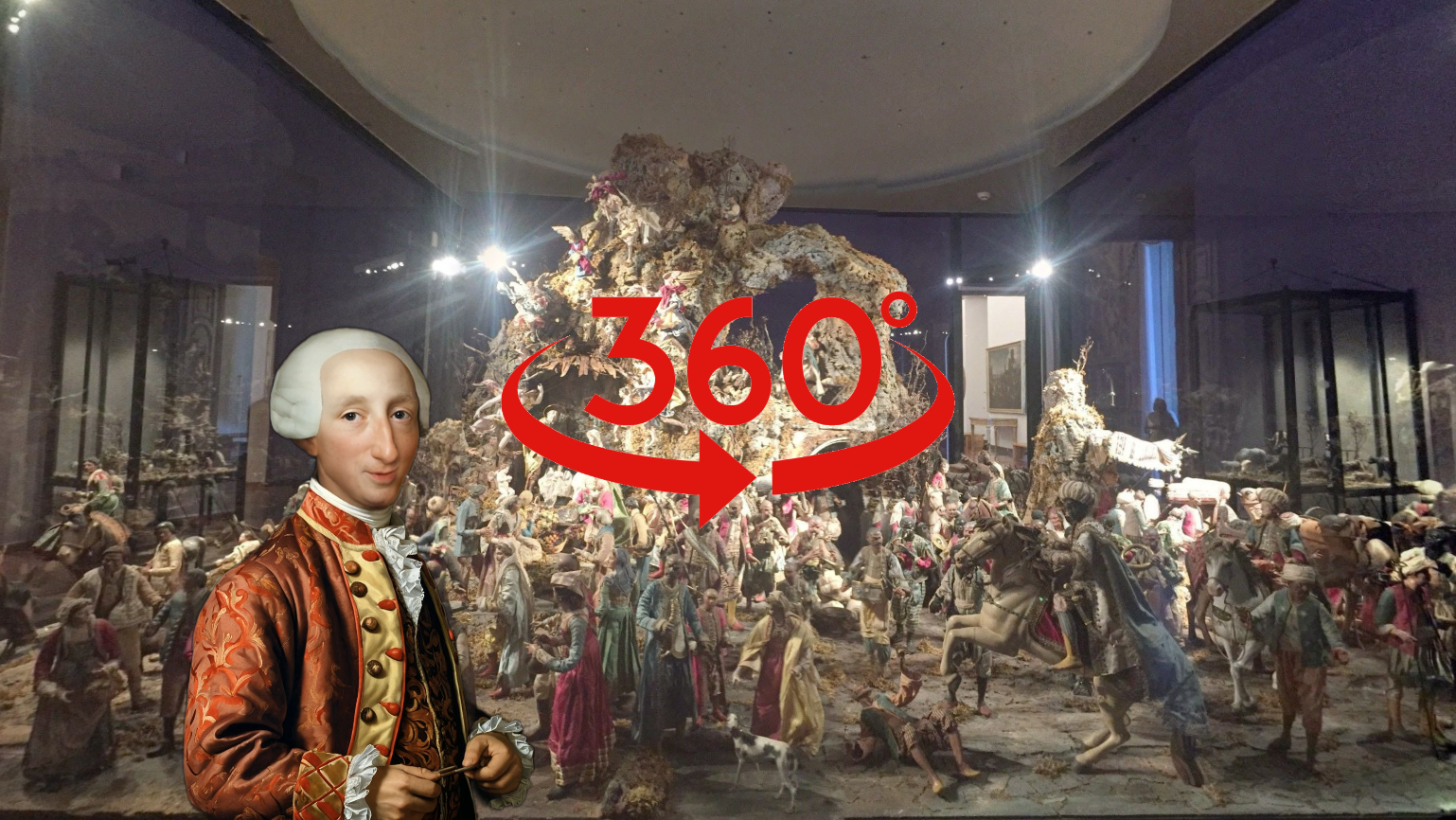Charles of Bourbon tells the Neapolitan Nativity Scene of the Royal Palace of Caserta
Welcome, dear readers! Today we immerse ourselves in a fascinating story through the words of Charles III of Bourbon, who enthusiastically tells us about his passion for Naples, the art of the nativity scene, and shares some anecdotes of his royal life.
Charles was born in 1716 in Madrid, and from an early age he was rigorously educated to prepare for the role that destiny had in store for him: to become the ruler of an extraordinary kingdom. Arriving in Naples in 1734, he immediately felt a deep connection with the city and its artistic traditions. Naples has never been just a home, but a forge of inspirations that Carlo has learned to keep in his heart.
Table of Contents
The Neapolitan Nativity Scene: Art and Craft
Carlo's passion for the Neapolitan nativity scene has become a central part of the Christmas celebrations at the Royal Palace of Caserta. Together with his wife, Queen Maria Amalia of Saxony, he created a nativity scene that was not only a religious symbol, but a real tribute to the craftsmanship of Naples. Carlo personally dedicated himself to the design of shepherds, meticulously carving cork to create figures of extraordinary beauty.
Maria Amalia, always at Carlo's side, worked with her daughters in the making of the shepherds' clothes, using the precious fabrics of San Leuccio, which were enriched with stones and refined gold embroidery. Every year the nativity scene grew, finding a place in larger and larger rooms, until it reached an imposing size in the racket gallery in 1844.
A Microcosm of Naples
The nativity scene of the Royal Palace of Caserta was not a simple Christmas ornament. On the contrary, it was a microcosm of Naples: a vivid representation of scenes of everyday life, dressed in pomp and detailed with a precision that only the hands of the most skilled Neapolitan artisans could render. The creations, from the legendary St. Martin to the terracotta shepherds, demonstrate the genius of a people capable of sublimating a ritual into a real art.
"Neapolitan craftsmanship knows how to transform tradition into art; an eternal message that continues to inspire," said Carlo.
The Importance of Tradition
Today, more than ever, the nativity scene of the Royal Palace of Caserta reminds us of the importance of preserving art, tradition and beauty. Carlo leaves us with an invitation: "Love your origins, value your mastery, because it is there, in the roots, that the greatness of a kingdom is found."
Through this story, he urges us to look for beauty and meaning in our traditions, to preserve them and pass them on with pride to future generations. This is not just a historical find, but an invitation to experience the art and tradition of Naples, stimulating new beginnings and interpretations.
A Life Dedicated to Art
From the moment Carlo arrived in Naples, a deep love for this land and its artistic expressions developed in him. His first experience in exploring local art was through the many workshops of sculptors and artisans that populated the Neapolitan streets. This direct contact with craftsmanship allowed him to understand the community value of the nativity scene, which went beyond the simple religious representation.
The Stages of Creation of the Nativity Scene
- Design and Conception : Carlo himself participated in the design phase, imagining new scenes to be represented. He drew on everyday episodes of Neapolitan life, blending them with spiritual and symbolic elements.
- Sculpture and Carving : Using mostly cork, Carlo and his artisans carved intricate details, from small houses to natural landscapes, creating an immersive rural environment.
- Sewing and Decoration : The expert hands of the queen and her daughters took care of the most delicate part: sewing the clothes for the shepherds, using fine fabrics from the well-known silk factory of San Leuccio.
- Final Assembly : After months of intensive work, the nativity scene took shape in its entirety, becoming a masterpiece exhibited in the gallery of the Reggia.
Influencing Future Generations
The creation of the nativity scene was not only an artistic exercise, but also an educational one. Carlo used to invite young artists and artisans to Caserta to observe the process and learn the importance of tradition. He saw in them a cultural continuity to be handed down.
Past and present intersect in the nativity scene of the Royal Palace of Caserta. Every year, the nativity scene was enriched with new figures and scenes, reflecting the cultural and social evolution of the time. Even today it continues to inspire artists, who find in it an example of craftsmanship and inventiveness.
"He who loves his art and his history, only expands the soul of his people," Charles often said, reminding his contemporaries and posterity that the true wealth of a kingdom lies in its culture and values.
Below you can fully immerse yourself in this fascinating tale and enjoy an immersive experience.
We conclude this journey through time and Neapolitan art, hoping that you, dear readers, will also find inspiration in your roots and in your personal history, thus discovering the strength of a culture that lives in our hearts and in our daily actions.





